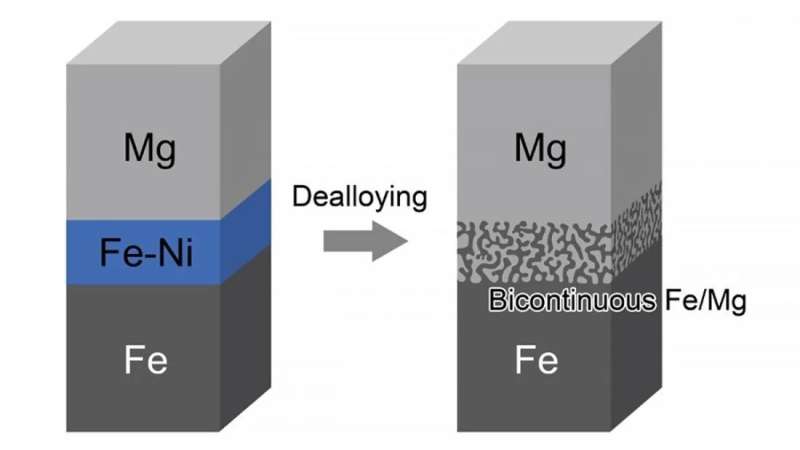This article has been reviewed according to Science X's editorial process and policies. Editors have highlighted the following attributes while ensuring the content's credibility:
fact-checked
peer-reviewed publication
trusted source
proofread
Improving alloys: Researchers successfully establish a strong mechanical bond of immiscible iron and magnesium

Conventional transportation equipment relies heavily on steel. But steel is heavy, and scientists are turning to alternatives in the quest to improve the safety and speed of transportation, while simultaneously lessening its environmental footprint.
Magnesium alloys, with their low density and excellent strength-to-weight ratio, are considered the next-generation base metal for multi-material design and have been touted as a possible replacement for conventional steels when appropriate.
Although progress has been made in overcoming certain weaknesses associated with magnesium alloys, such as flammability, developing bonding technology that bonds magnesium alloys with structural steels has been severely limited because magnesium and iron are immiscible and do not form at the alloy phase.
Yet, a research group from Tohoku University has succeeded in establishing a dealloying bonding technology that obtains a strong mechanical bond between iron and magnesium. The findings are published in the journal Scripta Materialia.
"Our dealloying reaction derives from the miscibility and immiscibility of the constituent elements in the bond, and also helped create a three-dimensional, interlocked microstructure at the interface of the two materials," said Kota Kurabayashi, a master's student at the Graduate School of Engineering, who co-authored the study along with Professor Hidemi Kato and Associate Professor Takeshi Wada from the Institute for Materials Research.
Kato also points out that this approach provides an ideal mechanical bonding method that creates a strong anchoring effect between materials that cannot form strong bonds.
Looking ahead, the research group plans to harness the advance dealloying technique to bond immiscible dissimilar materials and produce new light-weight materials that reduce the fuel consumption of automobiles, trains, and airplanes.
More information: Kota Kurabayashi et al, Dissimilar Joining of Immiscible Fe–Mg using Solid Metal Dealloying, Scripta Materialia (2023). DOI: 10.1016/j.scriptamat.2023.115404
Journal information: Scripta Materialia
Provided by Tohoku University





















